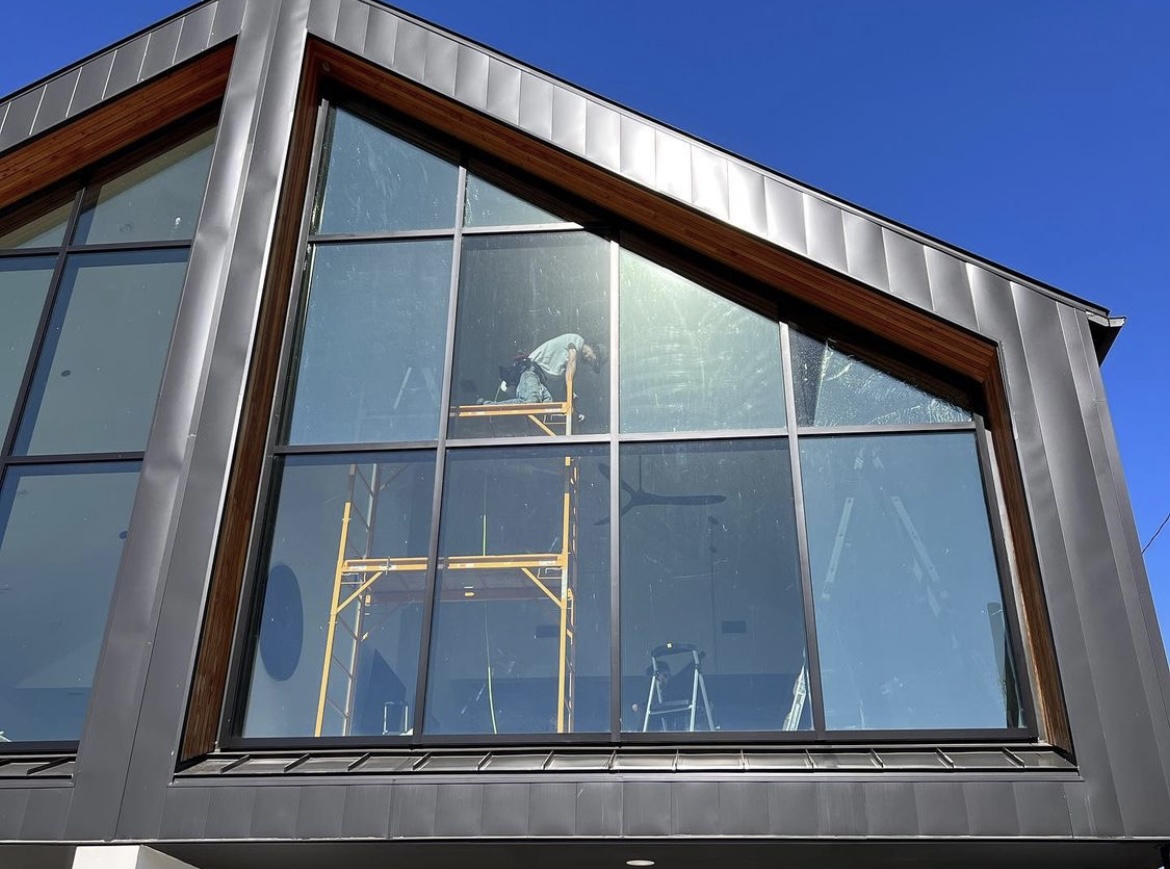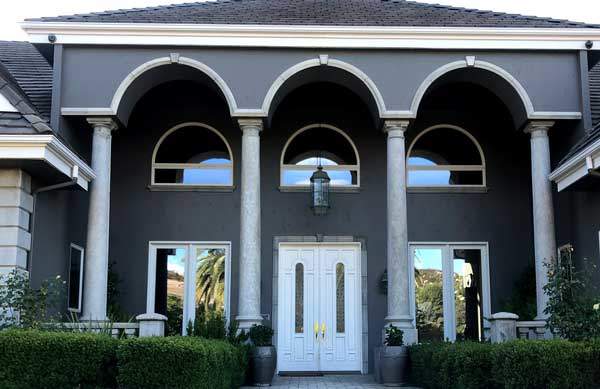Residential Window Tint: Boost Personal Privacy and Design in Your Home
Wiki Article
Exactly How Residential Window Tinting Enhances Your Home's Energy Performance
Residential home window tinting offers an engaging solution for house owners looking for to boost energy performance within their living spaces. By applying specialized films to windows, it properly lowers heat transfer, thus supporting interior temperature levels and decreasing the need for excessive heating or cooling.Comprehending Window Tinting
Comprehending home window tinting is necessary for home owners looking for to boost both comfort and energy efficiency in their living spaces. Residential Window Tint. Window tinting involves the application of a thin film to the interior or exterior surface area of glass home windows. This movie can dramatically regulate the quantity of sunshine and warmth that gets in a home, therefore influencing indoor climate problemsThere are numerous types of home window tinting movies available, each with distinct properties. The performance of window tinting is often gauged by its Visible Light Transmission (VLT) percentage, which shows exactly how much light can pass through the movie.
Benefits of Power Efficiency
Home window tinting not only boosts appearances however also plays a considerable role in boosting energy effectiveness within domestic rooms. By decreasing warmth transfer through home windows, tinted films develop a much more secure indoor environment, which can lead to considerable decreases in energy intake for cooling and heating. This power efficiency equates right into lower energy costs, offering home owners with substantial long-lasting financial savings.
In addition, home window tinting enhances the convenience of living areas. By lessening glare and obstructing dangerous UV rays, tinted windows develop a more pleasant setting, which can result in improved wellness for owners. The protection versus UV rays likewise aids protect furniture and floor covering from fading, adding to the long life of home items.
Exactly How Tinting Works
Tinting movies operate with a combination of innovative materials and modern technologies developed to regulate the quantity of solar power getting in a home. Primarily composed of polyester, these films frequently integrate ceramic or metallic fragments that show and soak up heat. This double capacity allows them to dramatically decrease the infiltration of ultraviolet (UV) rays and infrared radiation while allowing visible light to go through.The performance of window tinting is determined by its solar warmth gain coefficient (SHGC), which suggests just how much solar power is transmitted with the home window. Lower SHGC worths are better as they denote higher warm rejection. Furthermore, home window tints can include a range of tones, allowing house owners to tailor their aesthetic preferences while improving power performance.
Additionally, these films function as an obstacle, preventing heat loss during chillier months by mirroring indoor heat back right into the home. about his This thermal insulation result enhances the air conditioning benefits gained during warmer months, adding to a balanced indoor climate year-round. By handling solar energy successfully, household home window tinting not only improves comfort however likewise plays an important function in decreasing energy usage and reducing utility bills.
Choosing the Right Tint

There are numerous types of home window movies available, consisting of colored, metalized, and ceramic. Dyed films are cost-efficient but might have restricted sturdiness. Metalized movies offer better warm denial but can conflict with digital signals. Ceramic movies offer exceptional warm control without compromising visibility and are very long lasting, making them a prominent selection.
Visible light transmission (VLT) is another important aspect, as it shows the quantity of all-natural light that can travel through the colored glass. Homeowners should select a tint with a VLT that complements their illumination choices while still offering adequate glow reduction.
In addition, evaluating the solar warm gain coefficient (SHGC) can assist figure out just how well a color can obstruct warm from sunlight. A lower SHGC indicates better warmth control, inevitably boosting power effectiveness.
Installment and Maintenance Tips
Appropriate installation and upkeep are crucial components in making the most of the benefits of household window tinting. To achieve optimum results, it is advisable to work with a qualified professional for setup. This guarantees that the color is used correctly, staying clear of air bubbles, wrinkles, or imbalance that could endanger performance. Specialists likewise use specialized methods and tools, which can improve the resilience and performance of the tint.Following installation, upkeep is necessary to lengthen the life of the home window film. It is advised to wait a minimum of thirty day before cleaning up the colored home windows to allow the sticky to heal fully. When cleaning, utilize a soft towel and a mild, ammonia-free cleaner to avoid damaging the movie. Prevent abrasive materials that might scrape the surface area.
Addressing these concerns without delay can stop additional damage and maintain power effectiveness. By adhering to these installation and upkeep suggestions, house owners can guarantee their window tinting continues to supply substantial energy cost savings and comfort for years to come.
Final Thought
In final thought, domestic home window tinting functions as an efficient option for improving power effectiveness within homes. By lowering warm transfer and obstructing damaging UV rays, more helpful hints home window movies add to decrease energy usage and boosted indoor comfort. The selection of proper tinting products, in addition to appropriate setup and maintenance, even more makes best use of these advantages. Ultimately, home window tinting stands for a lasting investment that not just reduces energy expenses however likewise promotes a comfortable living environment throughout the year.Window tinting includes the application of a slim film to the interior or exterior surface of glass windows. By decreasing heat transfer through home windows, colored films create a much more secure indoor climate, which can lead to substantial decreases in power intake for home heating and air conditioning.The performance of home window tinting is measured by its solar heat gain coefficient (SHGC), which shows how much solar power is sent via the home window. By handling solar power properly, residential window tinting not just boosts comfort however additionally plays a crucial function in minimizing power consumption and decreasing utility expenses.
By reducing heat transfer and obstructing dangerous UV rays, home window movies contribute to decrease energy intake and enhanced interior basics comfort.
Report this wiki page